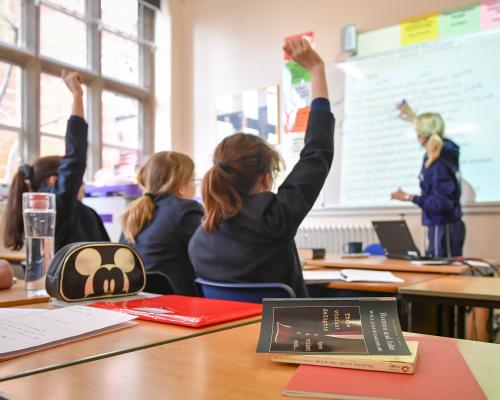
Ministers have vowed to tackle England’s “entrenched” educational gaps that are leaving some regions and groups trailing far behind their peers and closing off options such as university for many of their school leavers.
A-level results published on Thursday showed an improving national picture, with a higher proportion of young people gaining top grades. But the improvements faded outside London, the south-east and big cities.
While one in three entries from 18-year-olds in London gained A* or A grades, fewer than one in four did so in the north-east of England, where results remain below pre-pandemic levels seen in 2019.
London’s advantage means that the university application rate for its students remains considerably above all other English regions, even as record numbers of school leavers accepted offers to begin higher education courses this autumn.
The Department for Education said that the results “have exposed inequalities which continue to exist in the education system”, which it aims to tackle in a schools white paper later this year.
Bridget Phillipson, the education secretary, said: “Every single young person collecting their results should have the opportunity to pursue their dreams – whether that starts with further study, university, an apprenticeship or the world of work – but too often, opportunities depend on background rather than talent.
“The entrenched divide in outcomes seen over the last few years and the lack of progress for children from white working-class backgrounds is particularly concerning.”
Carl Cullinane, director of research at the Sutton Trust, which campaigns to improve social mobility through education, said: “If the government is going to break down barriers to opportunity, the growth in regional inequalities must be reversed.
“It’s positive that increasing numbers of young people from the most deprived areas are getting into university. This is important, because gaining a university degree remains the surest route to social mobility. However, today’s figures show the gap between the most and least deprived areas remains wide, and worse than before the pandemic in 2019.”
Pepe Di’Iasio, general secretary of the Association of School and College Leaders, said: “Schools and colleges face severe funding and staffing shortages, and these students were affected by the disruption of the pandemic earlier in their education. They have overcome the odds and we salute the fantastic efforts of our brilliant education staff.
“However, we continue to see big differences in attainment between regions, reflecting socioeconomic factors which represent a massive challenge, not only for the education sector but our society as a whole.
“We have to stop merely talking about these issues and actually address them with investment in communities suffering from generational disadvantage. This cannot be solved by schools and colleges alone but must also involve action to boost the opportunities available for young people.”
More than 28% of entries in England gained an A or A* grade, while 9.4% gained the top A* grade, higher rates than in 2024 or 2019, the last year before the disruption of the Covid pandemic when 25.2% of entries received top grades.
Ofqual, the exam regulator for England, rejected accusations of grade inflation, saying that the increase in top grades was the result of fewer students taking A-levels, and young men in particular shifting towards subjects such as physics, maths and economics with greater success.
Amanda Swann, Ofqual’s executive director for general qualifications, said that “any change in numbers achieving a grade is entirely due to a change in student performance, not a change in the standard expected”, with this year’s cohort of students appearing to be academically stronger than last year’s.
Results in Wales followed a similar pattern to England’s, with declining numbers of students taking A-levels and top grades rising among the remaining stronger candidates. For the second year in row the proportion of A* grades rose, to 10.5%.
In Northern Ireland, 8.7% of entries achieved an A*, compared with 8.2% in 2024, while 30.4% of entries achieved grades A* or A, fractionally higher than last year.
More than 200,000 students across the UK also received BTec level 3 qualifications, but a breakdown of results was not available. One in five working-age adults in the UK has at least one BTec, although the popular qualification remains under threat from government policy in England.
In England nearly 12,000 young people received results for T-levels, vocational qualifications first introduced in 2020 that have struggled to attract students. Although entries have increased substantially, T-levels remain less popular than A-level PE. The DfE also revealed that 27% of students originally enrolled on the two-year course dropped out or failed to complete it.





